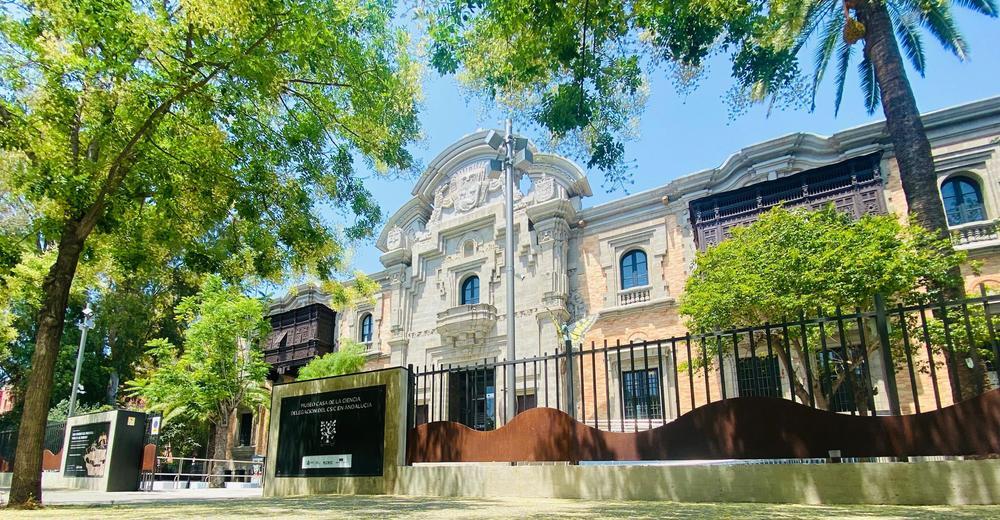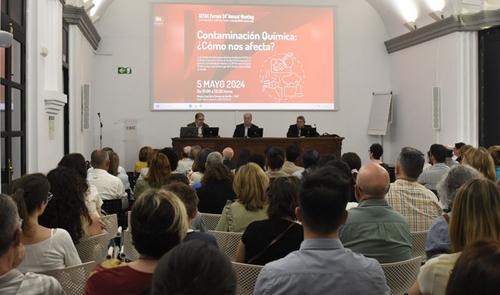Citizen Event Bridges the SETAC Europe Meeting to the City of Seville
Jose Julio Ortega-Calvo, Jose Luis Garcia and Julian Blasco, Spanish National Research Council (CSIC)
The SETAC Europe 34th Annual Meeting took place 5–9 May in Seville. Once again, Seville became the center of environmental chemistry and toxicology, with more than 3,000 participants from academia, industry and environmental regulation and management. For the first time, SETAC’s activities went beyond the purely scientific sphere to inform citizens about how priority environmental quality issues affect our health, environment, food quality and ecosystem services in general. To this end, the CSIC delegation in Andalusia collaborated on the event, “Chemical Pollution: How Does It Affect Us?,” which was hosted by the Casa de la Ciencia Museum. The event was fully in Spanish and divided into three short talks: “Seas and Oceans, the Great Garbage Dump,” “Microplastics in the Environment: A Global Challenge,” and “Phytosanitary Products in Agriculture.” Each talk was given by Spanish experts on the respective topic, who were in Seville for the SETAC meeting. The event was live-streamed and recorded by CSIC. Subtitles in different languages can be activated on the YouTube platform, through configuration or automatic translation.

In the first of these talks, Joan Grimalt of IDAEA-CSIC showed how chemical pollution has increased exponentially since 1800 when around 40 chemical compounds were used. In the present day, there are more than 1 million chemical compounds used regularly, and the seas and oceans are the final repository for many of them. The compounds can accumulate in organisms at different levels of the trophic chain and ultimately be ingested by humans through the consumption of fishery products.
The second presentation was on one of the hottest topics today, microplastics. Soledad N. Muniategui, from the Department of Analytical Chemistry at the University of La Coruña, gave an overview of the characteristics of microplastics and their distribution in different environmental compartments, as well as health effects and strategies to reduce their toxicity.
Finally, Juan Pascual from BASF presented how the use of phytosanitary products is part of modern agriculture, and how their use has allowed food security for the world's continuously growing population. He also pointed out that since these compounds can affect living organisms other than the target species for which they were developed, it is essential to ensure the safety of their use by studying their environmental distribution and their effects on organisms and humans.
The presentations were followed by an interesting debate with the audience, who showed great interest in the topics discussed and in hearing the researchers' opinions and expertise directly from them.

The event was a success from the point of view of the large number of people present (a full room with 100 participants), the attractive topics presented and, last but not least, the involvement of SETAC, represented on this occasion by the participants in the event (including the two SETAC Annual Meeting program chairs, J.J. Ortega and J. Blasco), and Jennifer Lynch and Erin Nelson, from the SETAC office. The public was receptive to the SETAC message of using science-based solutions to solve problems that are related to environmental quality, and the importance of contributing to the generation of knowledge to ultimately improve human health and quality of life. As a way of further introducing science to the public, CSIC made available to all event participants a free entrance to the science museum.
We hope that this event will be the beginning of a new series of citizen activities organized by SETAC during annual meetings, reinforcing our role as a key element in raising public awareness of global environmental challenges.
We would like to thank the Spanish National Research Council through its delegation in Andalucia and SETAC for supporting this activity, and Beatriz Jortega for video editing.
Author’s contact: [email protected]
